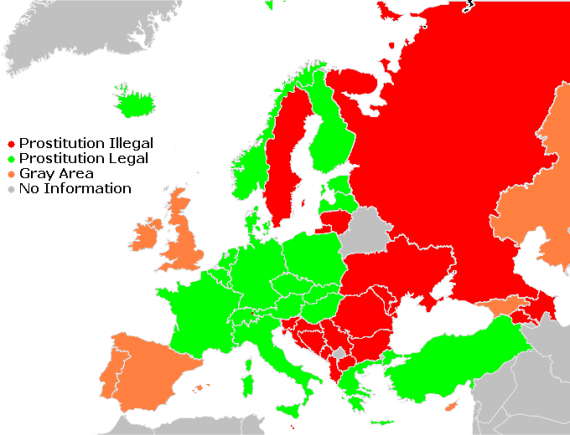Politics of Prostitution
Dobrý den, readers! I have returned from my time abroad in Prague and Brussels, chock-full of new insights about gender relations in a post-communist society and stories from sessions of the European Parliament’s Committee on Women’s Rights and Gender Equality, ready to lend some feminist flair to WUPR’s online columns. I missed you all. It’s good to be back (and speaking English)!
This article is the first in a small series about the politics of prostitution. Though strictly a taboo subject in American politics, the debate about prostitution in Europe is more multifaceted and, in many ways, more pragmatic. The famed Red Light District in Amsterdam is the same as ever, if cleaner and kitschier than ever before (good news: it’s now possible to check in there on Facebook). It’s not uncommon to see street prostitutes on major roadways in European cities, though somehow each time I spotted one, my traveling companions were utterly oblivious to the scene playing out before us. However, legislation in the Scandinavian countries—and hopefully similar measures in the European Parliament before too long—seeks to change the way prostitution is understood as a criminal act.

In some European nations, prostitution is legal and regulated. Turkey, for instance, has a paradoxically well-maintained series of brothels under government surveillance for compliance with health and safety codes. These will be discussed in part two of this series. In most nations, prostitution is illegal and the sale of sex services is a crime. However, Sweden’s Kvinnofrid law, enacted in 1999, criminalizes the purchase—rather than the sale—of sexual services. The law was the first of its kind and passed through the Swedish legislature largely due to its uniqueness. Through women held 41% of seats in parliament at the time, the debate was still divided along gendered lines: according to Yvonne Svanström at Stockholm University, male legislators focused on the bill’s restrictions on civil liberties—namely, that it intruded upon women’s right to self-determination and limited their choice of professions. Women, on the other hand, conceived of prostitution as anathema to Sweden’s progressive egalitarian culture and emphasized that prostitution was rarely a voluntary choice. The bill passed 181-92.
Since that time, Sweden’s national police board estimates that the number of prostitutes has dropped 40%, from 2,500 in 1998 to 1,500 in 2003. By 2008, a NIKK report estimated that 300 women were involved in street prostitution in Sweden, with a further 350 men and women engaging in prostitution using the internet. However, despite these reductions in overt prostitution, critics of the law maintain that sale of sexual services has only been pushed underground, which increases the risk of violence and makes this legislation extremely difficult to enforce. Of the 91 police reports filed for the purchase of sexual services in 1999, only six ended in conviction.
Though the unintended consequences of the law are cause for unease, the Swedish Model is generally accepted as an innovative and effective way of dealing with illegal prostitution: from the demand side. Norway and Iceland enacted similar measures in 2009, and Swedish Member of the European Parliament, Eva-Britt Svensson, hopes that the European Union will soon follow suit.